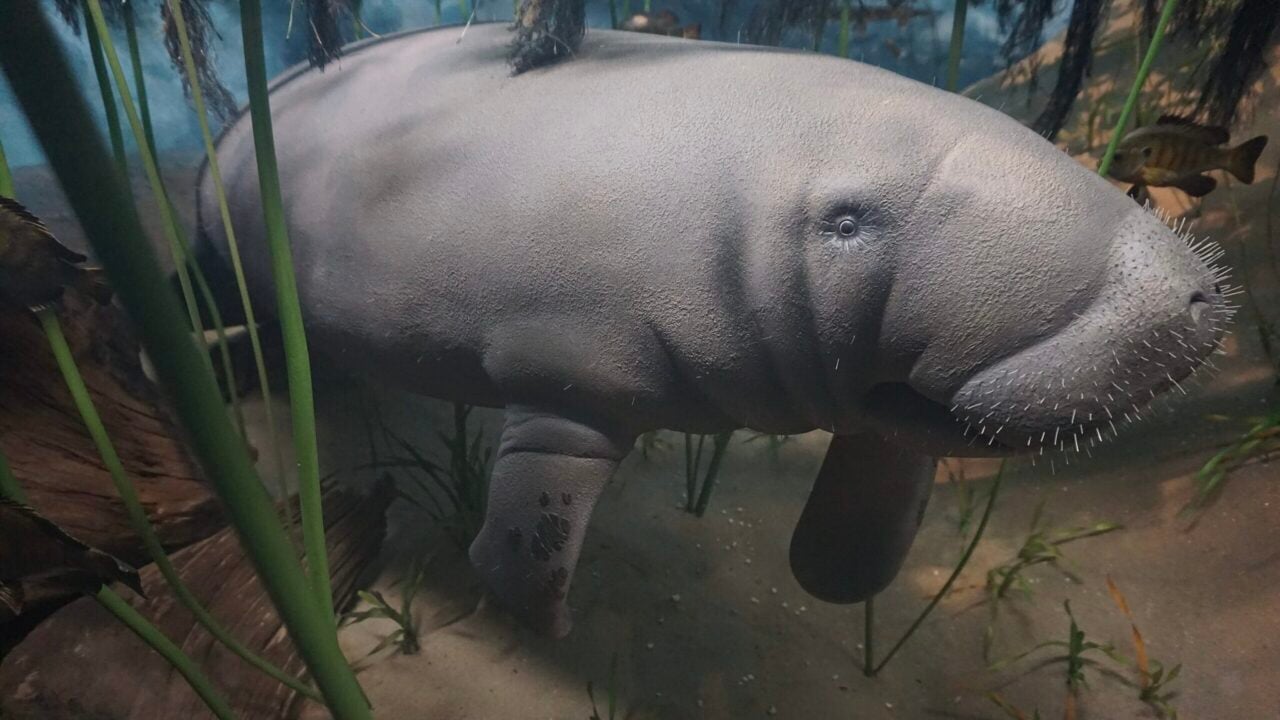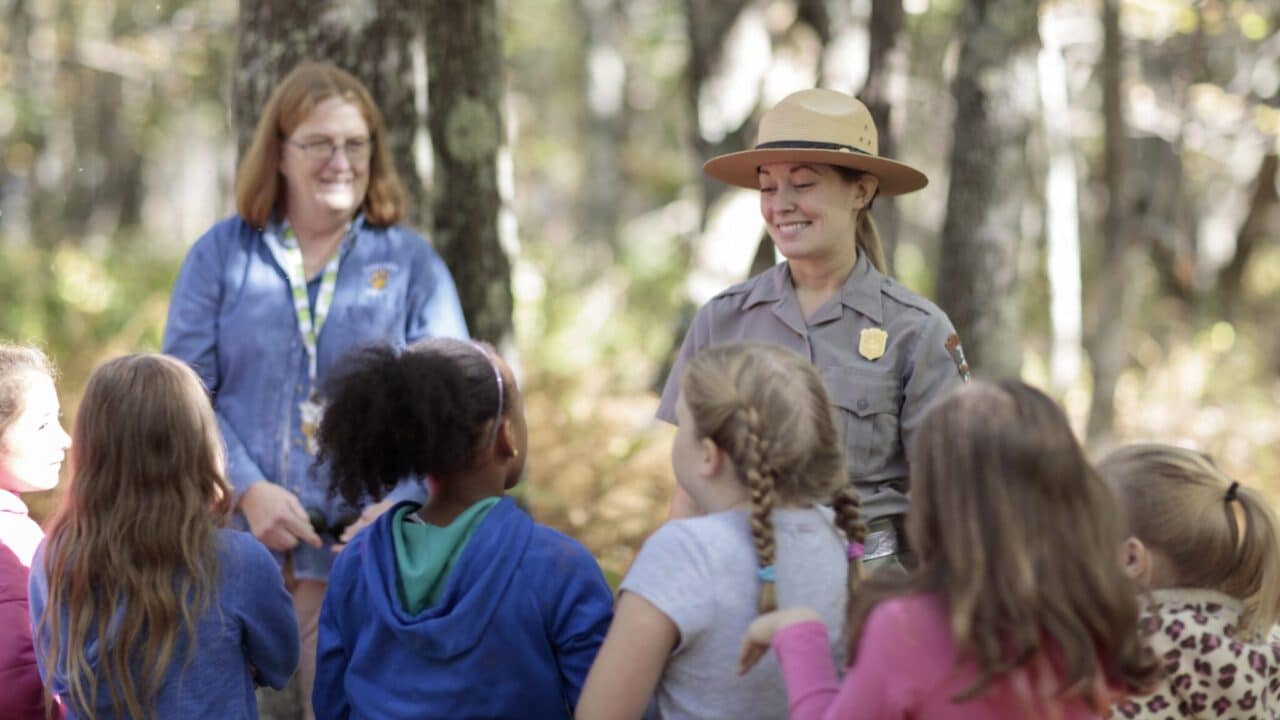Complete Guide to Florida’s Blue Spring State Park

Visiting Blue Spring State Park is an immersive experience that captivates the senses. During the winter, hear the symphony of manatees when they surface every few seconds, exhaling powerful bursts of air, or go during the summer and hear the loud growling bellow of alligators. Then there's the firefly season, where visitors can watch thousands of twinkling fireflies light up the night sky.
Everything You Need To Know About Florida's Blue Spring State Park

There are so many reasons to visit this hidden gem. Blue Spring State Park might be small, but there's much to do. Located an hour north of Orlando in Volusia County, the park is an off-the-beaten-path destination where you can experience a glimpse of “old Florida.” The park is open from 8 a.m. until sundown 365 days a year and is worth visiting, no matter the time of year.
When To Visit Blue Spring State Park

There are two seasons in the park; therefore, there will be different things to do when you visit. Depending on your activities of choice, there are two main seasons to experience:
- Summer (April – October): You can enjoy most of the park's activities during this time. It's peak season, though, and the park frequently reaches capacity and may temporarily close. Closures occur intermittently and may last several hours. There's swimming, snorkeling, diving, tubing, canoeing, kayaking, hiking, and more during the summer.
- Winter (November – March): This is prime manatee season. Hundreds of manatees gather in the Spring during the winter months. Therefore, the Spring will be closed to all water activities. You can still hike, picnic, bike, and go birding.
How To See Manatees at Blue Spring State Park

One of the park's biggest draws is the West Indian Manatee. It is a designated Manatee Refuge and winter home to hundreds of these adorable sea cows. Florida has the highest concentration of freshwater springs on Earth, and the water at Blue Spring State Park stays a perfect 72 degrees. The Spring makes up the watershed of the north-flowing St. John's River. They travel up the river for warmer water during the winter.
The Spring can hold up to 400 manatees. The park is home to important manatee research programs. The U.S. Geological Survey Sirenia Project photographs and identifies manatees by their scar patterns to determine which manatees are returning to Blue Spring each year. The park is the ultimate destination to see these magnificent creatures up close.
The park has a half-mile-long boardwalk that offers excellent views of the manatees. If you want a more educational experience, consider the Guided Wilderness Escape Segway Tour, which includes a Park Ranger to answer your manatee questions.
If you want to get even closer, consider a St. Johns River Nature Cruise that departs from the park. It's a narrated adventure that lets guests get an up-close view of nature. Not only will you see the manatees, but you'll also witness the enchanting cypress forests, majestic birds, and possibly alligators. If you want a preview of the manatees, check out the park's live webcams while planning your visit.
Swimming, Snorkeling, Tubing, and Diving at Blue Spring State Park

When the manatees aren't active in the park, the Spring opens up to water activities. During the summer months, visitors can enjoy the 72-degree water. The blue water is clear and a fantastic destination for snorkeling and diving. Snorkeling lets you see a school of fish; divers will love the park's underwater cave.
- Swimming: There are many spots for visitors to get into the water from the boardwalk area. Swim at your own risk and, like any freshwater Florida location, alligators could be present.
- Snorkeling: Visitors can rent snorkeling gear from the park's concessions store or bring their equipment. Water shoes are allowed.
- Tubing: Float a quarter-mile downstream in a single tube. Double tubes are not allowed. Rent tubes from Blue Springs Adventures in the park.
- Diving: The underwater cave at Blue Spring State Park has a depth between 90 – 130 feet. You can free dive up to 50 ft. It is only available to certified cave divers, and you must have a diving buddy. Capacity is limited to 32 scuba diving individuals at one time.
Florida Dive Company partners with the park to offer guided group snorkel and diving tours. Tailor your adventure by selecting from beginner Discover Scuba, Group Dive Tours, and Private Dive Tours. These immersive offerings are great for snorkelers or divers who want knowledge from a local expert.
Remember that the park often sees capacity crowds on Saturdays and Sundays on hot, sunny days. Arrive at the park early to ensure admission. Moss tree canopies cover the Spring and offer natural shade from the Florida sun.
Firefly Season at Blue Spring State Park

Every year, Blue Spring State Park lets visitors stay one hour after closing time, when the sun has set, during firefly season. It's a quick two-week season, from mid-March to April; the weather determines that. Check the park's event calendar for the firefly season dates as spring approaches.
The park admits a limited number of cars each night during firefly season. Arrive early, before sunset (around 5:30 or 6 p.m.), because visiting the park is popular. Park admission is $6 per carload, plus a $14 per car donation to the Friends of Blue Spring State Park, who provide volunteers along the self-guided trail. Walk along the boardwalk, where walking through the darkness is safe. Fluorescent paint guides the way for guests viewing fireflies. Guests are not permitted to wear bug spray or catch the fireflies. As you look out amongst the woods, you'll see thousands of twinkling fireflies.
Birding at Blue Spring State Park

The manatees take center stage, but there's another animal that the park is famous for: the Florida Scrub Jay. It's the only bird species unique to Florida. At one point, it was on the federal threatened species list. Bring your binoculars and walk along the park's Pine Island Trail (4 miles long).
Look around the edges of the scrub where there are open, bare, sandy areas. Blue Spring State Park is a Great Florida Birding Trail site with 142 species observed inside the park, including highlights such as chestnut-sided warbler, Blackburnian warbler, Mississippi kite, and merlin. Look for a ranger-guided walk on the park's event calendar for a more in-depth birding experience.
Hiking at the Park

There are almost four miles of hiking trails in the park. Walk under the oak trees with hanging Spanish moss and take in nature. You'll hear the cicadas and see birds, turtles, manatees, or alligators. An accessible boardwalk leads visitors on a self-guided tour through a lush hammock to Blue Spring. In addition, the Pine Island Trail is 3.6 miles, while the Sand Pine Scrub Trail is a 0.25 loop. Check for trail updates before hiking, as recent wet weather can cause the trails to close.
Florida State Park's Junior Ranger Program

If you're traveling with kids, participate in the park's Junior Ranger Program. The program focuses on the Florida Scrub Jay. Kids complete six core activities at the park and earn a patch. They can also earn a stamp on their Florida State Park Junior Ranger passport for visiting the park. Eventually, a completed passport earns the kids a pin! Junior Rangers are given a membership card after taking a pledge. Then, they can get their membership cards punched for one free entry into any Florida State Park. The entry is good for one vehicle with up to eight passengers. It's a great way to see Blue Spring State Park for free if you have kids.
Lodging at Blue Spring State Park

If you want a budget-friendly Florida vacation, consider the lodging options at Blue Spring State Park. There are 51 campsites, $24 per night, and six two-bedroom cabins, which rent for $95 per night. Each cabin has AC, a gas fireplace for use only in winter, a bathroom, a kitchen, a screened porch, and an outdoor grill with a picnic table. The campsites have water and electric hookups, a picnic table, and a grill. There are no sewer hookups, although a dump station is available to campers in the park. Maximum RV length is 40 feet.
Lodging reservations can be made up to 11 months in advance, and a minimum two-night stay is required. Pets are not allowed in the park cabins but are permitted at the campsites. Guests with lodging reservations are still allowed access when the park closes due to high crowds.
